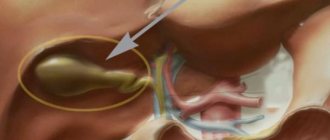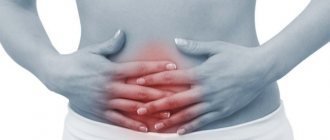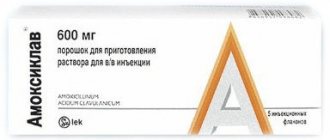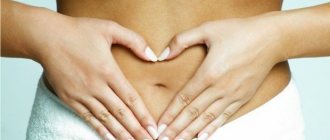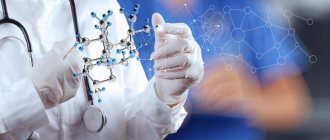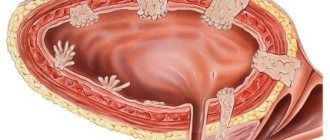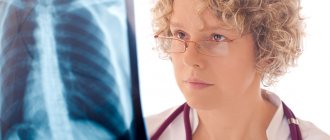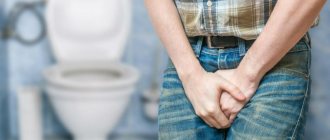The gallbladder is an important organ of the digestive system for both men and women. In its cavity, bile accumulates, which comes from the liver tissues, and then from the bladder through its ducts is thrown into the duodenum to break down fats with their conversion into acids and further absorption by the body. From an anatomical point of view, this organ is part of the liver and in case of its painful condition, the gallbladder is also indirectly affected by gastrointestinal disease. Symptoms of diseases associated with damage to its tissues almost always have typical symptoms indicating the presence of pathology. The lack of adequate and timely drug treatment almost always leads to an acute inflammatory process and surgical intervention. Let us consider in more detail the ailments that negatively affect the functioning of this particular part of the gastrointestinal tract, as well as the signs in which they are expressed.
What is the function of the gallbladder
Bile is produced in the body regularly and is also regularly released through the bile ducts. However, during digestion it only needs it when food is present in the intestinal tract. If bile enters without contents in the intestines, it can harm the mucous membranes of the intestinal tract.
The human body requires the gallbladder to prevent regularly secreted bile from entering the intestinal tract when there is no food there. Regulating the arrival of bile into the intestinal tract or gallbladder is quite simple - if the sphincter from the bile duct is open, then the bile goes into the intestinal tract. If it is closed, then the bile goes into the bladder. There it can accumulate for a long period. The water contained in the bile is partially absorbed, for this reason the bile in the bladder is thicker and more viscous than the liver.
When the sphincter of the duodenal papilla opens, bile initially flows into the lumen of the intestinal tract from the bladder, and then from the liver. If for certain reasons the sphincter remains closed for a long period, then bile stagnation, stone formation and other pathologies of bile outflow are likely.
The structure of bile contains a large amount of vitamins and minerals. Its key qualities:
- Export of harmful intestinal microflora. The yellow liquid helps not only to neutralize the activity of pathogenic microorganisms, but also to eliminate them from the body.
- Neutralization of juice produced by the gastric tract.
- Bringing tone to the intestinal tract, normalizing its functions.
- Activation of intestinal enzyme function.
- Elimination of residual active components of drugs from the body.
Gallbladder diseases in women can be associated with the gynecological area. For this reason, specialists often suggest that the patient be examined by a gynecologist.
Classification of diseases of the gallbladder and bile ducts
Currently, diseases of the biliary system in medicine are usually divided into:
- dyskinesia of hypertonic, hypotonic and mixed type;
- congenital pathologies in the structure of the bile ducts and nearby lymph glands;
- metabolic disorders with the formation of stones;
- cholecystitis, cholangitis, cholecystocholongitis;
- inflammatory, functional, mechanical dysfunctions of the duodenal papilla and bile ducts;
- conditions after removal of the gallbladder;
- diseases caused by parasites entering the biliary system;
- tumors;
- traumatic injuries.
Signs of the disease
The nature of the symptoms depends on what disease directly affects the gallbladder. This refers to specific symptoms, but general expressions are the same for all such diseases.
Often the first sign is severe pain in the upper abdomen, usually on the right or in the middle. The most common signs of gallbladder disease:
- Severe pain in the abdominal area.
- Pain in the collarbone or back on the right side.
- An increase in painful spasms after eating food, especially fatty and fried foods.
- The pain can be dull, sharp, or even shooting.
- The pain becomes worse when you take a deep breath.
- Painful spasms in the chest.
- Heartburn, digestive disorders, gas formation.
- Feeling of heaviness in the stomach.
- Nausea, fever, vomiting.
- Chills.
- Painful sensations in the abdominal area, especially under the ribs on the right.
- Yellowish tint to the skin and whites of the eyes.
- Unusual color of feces (often light).
Certain difficulties that are associated with the gallbladder may not speak about themselves. In most situations, they are found during X-rays due to a certain other difficulty, or even during surgical treatment of the peritoneal organs.
The gallbladder does not seem to be the most important organ until it causes severe pain. If a person has noted certain signs of gallbladder damage, then it is necessary to inform a specialist about this as soon as possible in order to prescribe research and therapy. This will enable the digestive system to resume its activities “like a clock.”
Main reasons
Appetite disturbances, bitterness in the mouth, poor sleep and a constant feeling of weakness are the first signals of an impending problem with gastrointestinal tract.
Causes of gallbladder disease.
- Poor nutrition. Abuse of so-called “junk” food leads to excessively active secretion of bile, and some of its components can provoke the appearance of sand and stones.
- Too much or too little cholesterol.
- Getting infected. Some bacteria can cause severe inflammation of the gallbladder mucosa (in particular, streptococcus, Pseudomonas aeruginosa and staphylococcus).
- The cause of the disease can be disturbances in the normal functioning of the muscles of the organ - too active or, conversely, insufficiently powerful contraction.
- The hereditary factor also plays an important role. If a patient has a hereditary change in the correct anatomical shape of the gallbladder, this significantly increases the likelihood of kinks.
- Genomic changes in the structure of mucosal cells create a favorable environment for the development of both benign and malignant tumors.
Symptoms of gallbladder diseases
It is worth remembering that if you experience severe pain in the abdominal area, accompanied by fever, you should immediately seek medical help. These actions can save a person’s life. The following are symptoms that are characteristic of a gall bladder attack:
- Pain under the ribs on the right side ranges from moderate to severe.
- Painful spasms can radiate to the back or right shoulder.
- Violent cramps in the abdomen (hepatic colic).
- Feeling nauseous.
- Vomit.
- Weakness.
- Gas formation.
- Belching.
- The attack often begins at night.
- It is typical for an attack to occur after a person overeats.
- Pain usually occurs after eating fatty and fried foods.
- Spasms intensify with deep inspiration.
- The duration of the attack can range from 15 minutes to 15 hours.
All gall bladder symptoms are expressed “pattern”, regardless of the presence or absence of stones. However, all the signs listed above can accompany gallstone disease.
Changes in anatomical shape
The gallbladder consists of several sections: fundus, body and neck. Hereditary factors and mechanical influence can cause a change in the natural position of these parts, forming a bend, twisting, constrictions, etc. Such deformations lead to difficulties in the functioning of the biliary tract, which leads to dangerous stagnation.
Symptomatic manifestations largely depend on the specific form of the change, but there are also general signs of the presence of this problem.
- The bend is almost always accompanied by severe pain, which is localized in the right side, in the area under the ribs.
- Various difficulties arise associated with the digestion process, because deformations lead to disruptions in the normal secretion of bile.
- If blood circulation is impaired due to a change in the anatomical shape of an organ, unpleasant manifestations in general well-being will occur, including weakness, increased sweating, and irritability.
- Twisting of the gallbladder neck threatens tissue necrosis. In this case, acute pain occurs throughout the abdomen, fever and nausea. Decomposition leads to the rapid spread of the inflammatory process and without medical assistance this can cause a person’s death, and in a short time (up to 12 hours).
Symptoms of gallbladder diseases in women
Hormones can cause gallbladder disease in women. Sex hormones increase cholesterol excretion. Carrying a child in the third trimester due to compression of the enlarged uterus provokes stagnation of bile.
The clinical picture of this course of the disease is accompanied by the following signs:
- Pain in the area of the right hypochondrium (the area where the liver and gallbladder are located) is paroxysmal in nature. The intensity of pain increases sharply when the bile ducts are blocked by stones or clots.
- Sudden loss of appetite (up to absolute loss).
- Significant reduction in body weight over a short period.
- Yellowness of the whites of the eyes and skin (advanced variants).
- Increase in temperature to 38-39 degrees.
- The occurrence of chills.
- Feeling nauseous.
- Periodic vomiting with the presence of bile is possible.
- Abnormal stool (prolonged constipation).
- Gas formation.
General signs of the disease in women, as in men, are associated with indigestion and bile outflow.
The first symptoms of gallbladder problems that should not be ignored
The gallbladder and bile ducts are organs of the digestive tract that perform the functions of transporting and collecting bile from the liver and its subsequent removal into the duodenum. Otherwise, this part of the gastrointestinal tract is called the biliary system. It consists of:
- gallbladder;
- bile duct system: cystic, hepatic and common bile duct;
- sphincter systems (regulators of bile flow).
The cystic duct connects with the hepatic duct, and from them the common bile duct is formed, which flows into the duodenum and ensures the flow of bile from the biliary system into the intestine.
Thanks to bile, it becomes possible: the removal of heavy metal salts and other harmful substances from the body, further digestion of fats (it emulsifies them into smaller droplets), absorption of vitamins A, E, K and D, activation of digestive enzymes and intestinal motor activity.
Malfunctions in the functioning of this part of the digestive system are observed very often, and in terms of their frequency, pathologies of the gallbladder and bile ducts occupy third place among all diseases of the gastrointestinal tract. According to statistics, they are more often observed among women over 45-50 years of age, and in recent decades their frequent development has been noted among younger people and adolescents.
The cause of pathologies of the biliary system can be a variety of factors:
- infections that cause inflammation of the walls of the biliary system (cholecystitis, cholangitis);
- genetic abnormalities (for example, kinks in the gallbladder), leading to changes in the shape and dysfunction of the organs of the biliary system;
- gene mutations in the cells of the gallbladder mucosa, provoking the formation of benign and malignant tumors;
- disturbances of the innervation of the biliary organs due to neurological or neuroendocrine pathologies, leading to disruption of the normal outflow of bile;
- changes in the composition of bile caused by various pathologies and leading to the development of cholelithiasis and cholesterosis (accumulation of cholesterol on the walls of the gallbladder);
- helminthic infestations;
- poor nutrition;
- intoxication;
- drinking alcohol and smoking;
- taking certain medications.
The above reasons lead to the development of pathologies of the biliary system, which are accompanied by various symptoms of diseases of these organs.
They can be local and general, varied in nature and combination, not always characteristic only of problems with the gallbladder and are often supplemented by signs of pathologies of other organs of the digestive tract (for example, symptoms of gastritis or pancreatitis).
But in most cases, their combination makes it possible to suspect problems in the biliary system, and the patient can take timely measures to eliminate these diseases.
In our article we will introduce you to the main symptoms of problems with the gallbladder and bile ducts. This information will be useful to you, and you will be able not to miss the warning signs of many ailments of the biliary system.
7 symptoms of gallbladder problems that require you to see a doctor
Symptoms of diseases of the gallbladder and biliary system are largely similar and, at the same time, each of them has its own characteristics. In such cases, only a doctor can make a final diagnosis, who will conduct a series of diagnostic tests and analyze all the results of the patient’s examination.
The following alarming symptoms may be a reason to contact a gastroenterologist or hepatologist:
- Pain in the right hypochondrium
. Painful sensations in pathologies of the biliary system can be of varying degrees of intensity (for example, they are more pronounced with cholelithiasis and less with cholecystitis or a kinked gallbladder). Pain is often triggered by eating or eating fried, spicy, fatty or smoked foods, physical activities (bouncing, running, jumping, lifting weights, etc.) or stressful situations. Pain sensations can be sharp, dull or aching and occur in the form of sudden attacks or be more stable (sometimes permanent) in nature with periods of exacerbation. Unpleasant sensations in the right hypochondrium may intensify when palpated.
Intense, sharp and sudden pain is most characteristic of hepatic colic and, in most cases, is caused by the movement of stones in cholelithiasis.
As a rule, they are of a point nature, and the patient can accurately indicate the location of the painful sensations. Such pain is often accompanied by nausea, vomiting, a bitter taste in the mouth, or jaundice.
The temperature rises to 38 °C or remains within normal limits.
With other diseases of the gallbladder, pain in the right hypochondrium is less intense, more often it occurs periodically or appears constantly (possibly with obvious short-term periods of exacerbation).
They may be supplemented by other symptoms, the nature and severity of which depend on the type of gallbladder disease.
Pain in acute cholecystitis, as a rule, is supplemented by fever and signs of intoxication, and pain in chronic inflammation of the gallbladder is less intense and for a long time may be the only manifestation of the disease.
https://www.youtube.com/watch?v=0TUzrBR-JFo
Benign and malignant neoplasms of the gallbladder and bile ducts may not cause severe pain for a long time or may not cause pain at all. Initially, the patient experiences frequent or constant pain in the right hypochondrium, which may intensify as the tumor grows.
It is difficult to eliminate with conventional painkillers and is always accompanied by other symptoms of digestive upset and/or signs of general intoxication. Sometimes, with large tumor sizes, patients can feel a lumpy, dense and almost painless lump in the area where painful sensations appear.
- Signs of digestive disorders
(decreased appetite, nausea, vomiting, flatulence, belching with air or bitterness, diarrhea or constipation). Most diseases of the gallbladder and bile ducts are accompanied by disturbances in the separation of bile and its composition. These changes provoke dyspeptic disorders, because food cannot be digested normally and creates additional stress on other organs. Signs of digestive disorders can be caused by diseases of the biliary system, or be consequences of these pathologies (i.e., symptoms of diseases of other organs of the gastrointestinal tract). - Yellow coating on the tongue
. Biliary dyskinesia, tumor processes and cholelithiasis often lead to the reflux of bile into the esophagus and oral cavity. As a result, the tongue becomes covered with a yellow coating (its intensity can vary - from slightly yellow to yellow-green). - Bitterness in the mouth
. This symptom is characteristic of many pathologies of the biliary system. It is caused by the reflux of bile into the esophagus and oral cavity. Bitterness in the mouth can become a sign of cholecystitis, bile duct dyskinesia, cholelithiasis and tumor neoplasms. - Yellowness of the mucous membranes and skin
. This symptom can be observed both in liver pathologies and in diseases of the biliary system. It is triggered by the entry of bile acids into the blood (they are the ones that color the skin and mucous membranes). Jaundice can be observed with dyskinesia of the bile ducts, cholelithiasis, chronic cholecystitis and tumor processes accompanied by impaired outflow of bile. - Discolored stool
. With biliary dyskinesia, cholecystitis, cholelithiasis, neoplasms and kinks of the gallbladder, the patient may experience discoloration of stool. As a rule, this symptom is accompanied by pain in the right hypochondrium, jaundice and other signs of damage to the biliary system. This symptom is characteristic not only of pathologies of the biliary system and may indicate the presence of diseases of the liver and other organs, various errors in the diet or taking certain medications. - Dark urine
. This symptom is observed with an increase in the level of bilirubin in the blood, which can be observed with biliary dyskinesia, cholecystitis, cholelithiasis, tumors and kinks of the gallbladder. This sign of damage to the biliary system may be present not only in the above diseases and requires a careful study of the patient’s medical history and differential diagnosis with other diseases and conditions (for example, taking certain medications or foods, dehydration, etc.).
These seven basic symptoms of diseases of the bile ducts and gallbladder should be a reason to consult a doctor, but to clarify the diagnosis, the patient is always prescribed additional laboratory and instrumental tests. The examination plan may include the following procedures:
- clinical and biochemical blood test;
- Ultrasound of the abdominal organs;
- contrast radiography;
- CT;
- MRI;
- fine-needle biopsy (ultrasound-guided).
After assessing all diagnostic data, the doctor will prescribe treatment for the patient, which may consist of etiotropic, pathogenetic and symptomatic therapy.
For some diseases - cholelithiasis, neoplasms of the gallbladder or its ducts, calculous cholecystitis - the patient may be recommended surgical treatment.
All patients with pathologies of the biliary system are recommended to follow a diet and review their taste preferences in the future.
Most diseases of the biliary system, if treated in a timely manner, respond well to treatment and can proceed without complications. That is why the first signs of problems with the gallbladder and biliary tract should always be a reason to contact a gastroenterologist or hepatologist.
An untimely visit to the doctor always leads to the progression of the disease, the development of concomitant pathologies of the digestive tract and can cause the development of such serious complications as intestinal obstruction, gallbladder phlegmon, peritonitis, sepsis, cancerous tumors, etc. Remember this and be healthy!
Which doctor should I contact?
If any of the signs listed in the article appear, you should consult a general practitioner or family doctor. These doctors will conduct an initial diagnosis of the disease. After this, the patient is referred to a gastroenterologist. In the future, after the final diagnosis is formulated, a surgeon, infectious disease specialist, and oncologist may participate in its treatment.
article version:
Our videos on the topic:
Take care of yourself and subscribe to our Zen channel, good luck!
Original article: https://myfamilydoctor.ru/pervye-simptomy-problem-s-zhelchnym-puzyrem-kotorye-ne-stoit-ignorirovat/
see also
Source: https://zen.yandex.ru/media/myfamilydoctor/pervye-simptomy-problem-s-jelchnym-puzyrem-kotorye-ne-stoit-ignorirovat-5a2aae26a815f1e7d2fcb2bb
"Silent" gallstones
Approximately 70-89% of patients with gallstone disease are unaware of the presence of gallstones. They are called "quiet" stones. But the remaining 20-30% turns into 500-700 thousand operations to remove the gallbladder per year.
Since there is no tendency among the population to improve their own nutrition, these numbers only increase over time. The risk of silent stones contributing to a gallstone attack is approximately 1% per year.
Description of the main ailments
Let's look at the most common gallbladder diseases, their symptoms and treatment:
Chronic calculous cholecystitis
Occurs against the background of a disorder in the exchange of bilirubin and cholesterol. With this pathological condition, stones form in the liver, gall bladder and its ducts, as well as motor-tonic disorders of the biliary system. Most often it occurs in the female half of the population, in people over 40 years old, with obesity and women who have given birth.
There are 3 types of stones: cholesterol, bilirubin pigment stones of brown or black hue.
This disease can occur for a long period of time without showing symptoms, and in the clinical picture one can observe “hepatic colic” when a stone enters the bile duct.
Chronic acalculous cholecystitis
This is inflammation over a long period of time in which the mucous membrane of the bladder is damaged and no stones appear. Development factors:
- Infection caused by bacteria. Most often, Escherichia coli, fecal streptococcus, staphylococcus, anaerobic bacteria, coli and paratyphoid.
- Infection of humans with parasitic worms of various types. Most often - cat fluke, giardia and large roundworms.
- Rejection of secretions from the intestines. It is considered the most dangerous due to the content of pancreatic enzymes in bile, which, once in the bladder, destroy its walls. Another name for this pathological condition is chemical cholecystitis.
- Allergic reaction. Due to the consumption of food products or an allergen that has entered through inhaled air.
- Inflammation of the gastrointestinal tract. Most often against the background of inflamed diseases of the liver and pancreas.
- Stagnation of secretion.
Biliary dyskinesia
There is a change in tone in the bladder against the background of periodic pain and dyspepsia. Most often functional in nature.
The development of this pathological condition is influenced by frequent stressful situations, psycho-emotional overload and disorders of the central nervous system. There are 2 types of pathology: painful and dyspeptic.
Cholangitis
This is inflammation in the bile ducts. As a rule, it is an undesirable consequence of chronic cholecystitis, cholelithiasis and after resection of the bladder. The occurrence of this pathological condition is influenced by stagnant secretions, tumor formations with compression of the duct and stones. Obstructive, recurrent, bacterial and recurrent sclerosing cholangitis are observed.
Gallbladder oncology
Typically, cancer is a consequence of chronic inflammation. There are: glandular cancer, mucous, squamous and solid. With this pathological process, frequent metastases and germination into neighboring organs occur, and high malignancy occurs.
Chronic and acute cholecystitis
The chronic course of cholecystitis is characterized by external signs such as:
- Burning sensation or nagging pain on the right side.
- Pain in the abdominal area (upper region) is likely.
- Pain sensations can radiate to the lumbar region and to the left side in the area where the heart muscle is located.
- Possibility of heartbeat instability.
Pathology of normal activity of the heart and blood vessels is considered the result of prolonged intoxication, which is provoked by an infectious lesion of the gallbladder.
If the patient suffers the symptoms for a long period and does not consult a doctor, then the chronic inflammatory process can provoke solar syndrome, in which pain begins in the solar plexus. The main expression of this syndrome is considered to be a rather strong, burning, almost unbearable pain sensation that radiates either to the navel area, or to the back, or to both areas at once. The intensity of pain increases after eating, during stressful situations, after drinking alcohol and with increased physical activity.
The key difference between these forms of the disorder is that the acute course of cholecystitis is always accompanied by signs of intoxication: increased body temperature, headaches, joint pain, lethargy, and general weakness of the body.
Against the background of such signs, the patient rapidly loses body weight. In the chronic course of the disease, this usually does not happen, and periods of exacerbations alternate with periods of remission.
Common signs for any inflammatory process of the gallbladder are:
- Frequent belching of air;
- Bitter taste in the mouth;
- Bloating;
- Dyspeptic disorders (diarrhea gives way to constipation, nausea and vomiting);
- A feeling of subcutaneous irritation appears as a result of the action of bile acids accumulating during cholecystitis on skin receptors;
- Exacerbation of pain and the appearance of reflex vomiting after consuming fatty, spicy, fried foods and alcohol.
Tumors
Obstructive formations in the biliary system can be either benign or dangerous, malignant. The former usually do not have any specific manifestations and are discovered accidentally during diagnostic studies. Very often, the appearance of formations occurs against the background of the development of cholecystitis.
Polyps are pathological growths of the upper layers of the gallbladder mucosa and have no clinical manifestations.
Did you know that polyps occur in only 5% of patients, the vast majority of whom are female and over 30 years of age.
Malignant cancer tumors are almost always combined with the presence of gallstone disease. The mechanism of tumor formation is similar to polyps; the disease quickly spreads to other organs of the gastrointestinal tract. In most cases, adenocarcinoma is diagnosed. The early stages of cancer usually pass without obvious symptoms, only in the later stages do general signs appear: weight loss, anemia, increased fatigue and loss of appetite. During an examination, palpation by a doctor may reveal a dense, tuberous formation - the most characteristic sign of a malignant tumor.
Diagnostics
To establish the correct diagnostic conclusion, a description of the symptoms may often not be enough - they are often vague in nature and often the patient is able not to even attach much importance to these symptoms until an attack occurs. General urine and blood tests may be completely normal without exacerbation of illness. During an attack, the leukocyte volume in the general blood test increases. In the biochemistry of the blood, 1-2 days after the attack, bile acids are found, bilirubin increases. Its increase is also observed in urine, while in feces it, on the contrary, decreases.
More valuable information is provided by laboratory and instrumental methods for examining the function of the biliary tract. Ultrasound of the peritoneum makes it possible to detect gallstones and anatomical anomalies. To make a more accurate diagnosis, angiographic methods are used, which make it possible to trace the dynamics of bile outflow.
Duodenal intubation demonstrates how bile enters the duodenum. For gallbladder diseases in childhood, this diagnostic method is used quite rarely.
Diagnostic methods
To properly treat a particular disease, you first need to conduct a detailed diagnosis, which includes the following:
- A general blood test (will make it possible to identify if there is inflammation in the body, and will also provide detailed information about the state of the blood, hemoglobin and leukocytes).
- General urine test (will provide information about the condition of the kidneys).
- An abdominal ultrasound will show the general condition of the internal organs, including the gallbladder. This study will show whether the bladder is bent, how thick its walls are and whether there are stones in it (you can read how to prepare for the procedure here).
- Fluoroscopy with a contrast agent will show the condition of the internal organs and the overall size of the gallbladder.
- An MRI will show the presence of stones or cancer pathologies.
Treatment of gallbladder diseases
Based on the established diagnosis, appropriate treatment of disorders is carried out. General therapeutic measures include the use of medications that target:
- Reducing inflammation in the organ;
- Blocking the formation of parasitic forms of infection;
- Improving the activity of the biliary tract;
- Pain relief;
- Improved rejection of biological secretions;
- Blocking gag reflexes;
- Slowing the growth of infections;
- Increased motility of the gallbladder.
Diet for gallbladder diseases
Patients with excess body weight need to limit caloric intake and carry out fasting days. The therapeutic diet, according to the list of permitted dishes and products, belongs to table No. 5. The following are strictly contraindicated for the patient:
- Fried and smoked food (replaced by boiled, steamed, stewed dishes).
- All types of alcoholic drinks, carbonated drinks.
- Hot spices, seasonings, canned food, pickled products, pickles.
- Beans.
- Fatty culinary products with cream.
Note! It is recommended to eat in small, warm portions up to 6 times a day.
You can drink weak green tea, rosehip decoction, diluted fruit juices, low-fat dairy products, cereals, low-fat meat and fish.
General recommendations for prevention
In order to reduce the risk of developing any gallbladder disease, it is necessary to adjust your lifestyle, eliminating factors that create a favorable environment for the development of the disease.
Prevention of gallbladder diseases involves:
- proper, balanced nutrition;
- strict restrictions on the consumption of alcoholic beverages;
- food intake should not be plentiful, the ideal option is 4 times a day in small portions at the same time;
- the diet must contain foods containing protein;
- fasting must be avoided;
- Stress and excessive physical activity should be limited as much as possible; It is important to have moderate intensity sports training.
The occurrence of pain in the area of the right hypochondrium should definitely alert you - often this is the first symptom, and you should go to the hospital immediately. Diagnostic testing will identify the specific disease, and if detected early, treatment will have a more favorable prognosis.
Therapeutic treatment
The inflammatory process requires the use of antibacterial drugs. Antibiotics with a broad spectrum of action are used. Specific therapy in courses at intervals is prescribed when parasites are detected in the bile. For this we use:
- Furazolidone.
- Fazizhin.
- Erythromycin.
- Trichopolum.
- Chloxyl.
- Kombantrin.
- Vermox.
To eliminate spastic pain, the following are recommended for use:
- Atropine.
- No-shpa.
- Platyfillin.
Attacks of gallstone disease are eliminated by Nalbufin, Promedol, Ketanov. For hypotension of the pathways, cholecystokinetics are used. Hepatoprotectors (Essentiale, Hepatral) are used to prevent a reactive inflammatory process in the liver.
With concomitant diseases of the pancreas and damage to the gastric tract, enzyme preparations and medications that suppress secretory function may be needed:
- Pancreatin.
- Pangrol.
- Creon.
- Gastenorm.
- Festal.
- Mezim.
- Enzistal.
- Penzital.
- Panzinorm.
- Kvamatel.
- Almagel.
- Controll.
- Maalox.
- Omez.
In the treatment of dyskinesia, it is necessary to provide a safe regimen, sedatives from less strong to sedatives. In such options, physical procedures are shown - galvanic collar, diadynamic currents, inductothermy.
There has been a negative attitude towards stone crushing techniques lately. All devices, together with stones, damage the walls of the organ, worsen the severity of the disease, and provoke perforation.
Surgery
Surgical treatment is carried out in a situation where the patient has gallstone disease and indications for surgical intervention. Removal of a bladder that is filled with stones can be planned or emergency.
During a planned surgical intervention, the patient, as a rule, has a choice whether to agree to a traditional laparotomy or a less traumatic endoscopic method. If the patient is suddenly struck by an attack of gallstone disease (for example, if a large stone moves to the neck of the gallbladder, an inflammatory process appears, which is accompanied by powerful painful spasms and a sharp deterioration in health), then in most situations a laparotomy will be performed.
To prevent such an unpleasant consequence, you need to carefully monitor your own condition, contact specialists in a timely manner and follow their recommendations. In this case, if surgical intervention is required, it will be planned and the patient will tolerate it more easily.
Recommendations
If pain in the gallbladder appears unexpectedly and the patient does not have the opportunity to seek medical help, then many people ask the question: how to treat the gallbladder before contacting a specialist. To do this, you need to go on a starvation diet and use analgesic drugs. To improve your well-being, you can take tea based on the flowers of calendula, chamomile, tansy, sandy immortelle, dandelion rhizome, as well as wormwood, celandine and fennel seeds.
If pain manifests itself at night, then to improve well-being the patient can lie on the left half of the body and gently knock on the right side under the costal arch. This technique will reduce pain due to the release of part of the secretion from the gallbladder.
Folk remedies
Traditional methods will be a good complement to classical therapeutic measures. Even doctors often supplement the classical treatment of gallbladder disorders with traditional methods.
- Rosehip decoction: crush 3 tbsp. Rose hips, pour 300 ml of boiling water and simmer over low heat for 5 minutes. Then remove from heat and let cool, then strain the broth through a fine sieve. The solution can be used orally, 100 ml 3 times a day, 10 minutes before meals. This decoction has a choleretic, analgesic and anti-inflammatory effect and is considered an analogue of the “Holosas” remedy. This remedy is used for non-calculous cholecystitis, hepatitis, and biliary dyskinesia.
- Beet broth: rinse and peel two medium-sized beets, cut into medium pieces, then pour 10 glasses of water over them, put on the stove and bring to a boil, then leave the broth to simmer over low heat for about another 5 hours. When the beets are ready, you need to grate them, put them in cheesecloth and squeeze out the juice. It needs to be combined with a decoction, take 60 ml 30 minutes before meals 3 times a day. The course lasts 7-10 days.
- Herbal mixture: mix 1 tbsp. Plants: celandine, mint leaves, calendula flowers, wormwood, dandelion rhizomes, tansy flowers, corn silk, immortelle flowers. Then pour 10 g of the collection with 2 glasses of boiling water, cover with a lid and let it brew for 40 minutes. The finished tincture is filtered through a fine sieve and consumed orally, half a glass three times a day before meals.
- Infusion of lingonberry leaves: pour 10 g of crushed lingonberry leaves with a glass of boiling water, cover with a lid and leave for 40 minutes. The finished infusion should be stored in the refrigerator and consumed 30-40 ml 4-5 times a day before meals.

